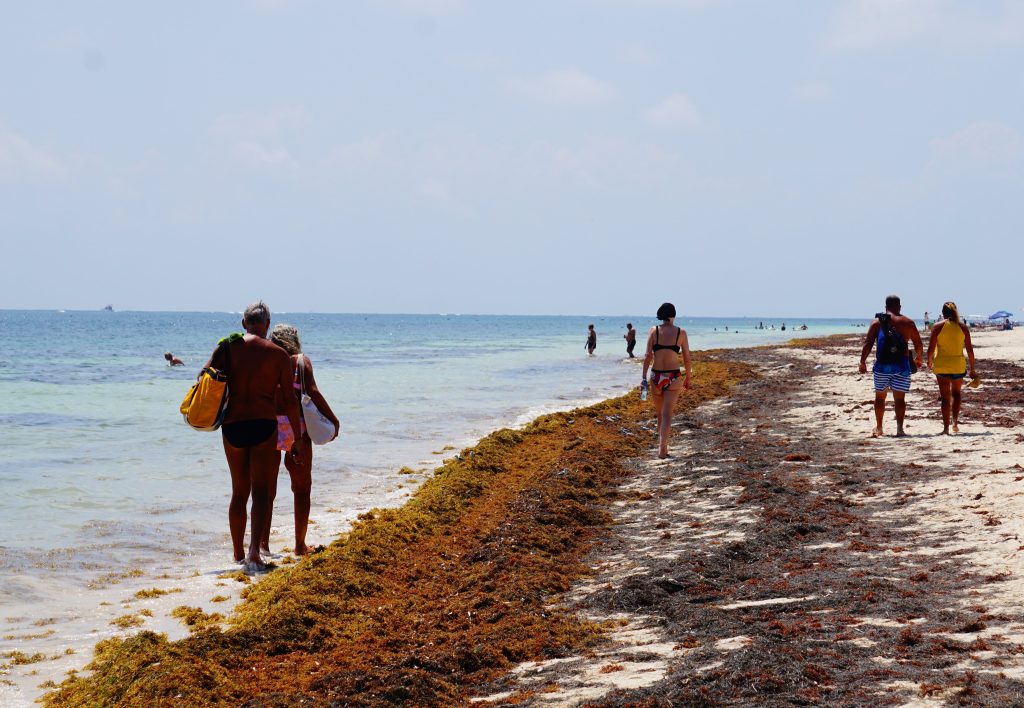The sargassum season for Florida is gone: Mysterious seaweed disappearances continue

The Great Atlantic Sargassum Belt once loomed over Florida beaches, threatening to send ashore piles of sulfur-scented seaweed that would smother sea turtles, aggravate asthma and turn away tourists. Now, scientists say the seaweed belt has suffered a mortal blow after a month of unusually strong winds. A series of early tropical storms tore through the Atlantic in June, setting up a Godzilla-versus-Mothra style battle between two consequences of climate change: abnormally large seaweed blobs and abnormally early tropical storms. Researchers at the University of South Florida who monitor the Great Atlantic Sargassum Belt, the mass of floating brown seaweed that stretches 5,000 miles from the west coast of Africa to the Gulf of Mexico, were shocked to see just how much sargassum levels fell last month in the Gulf and the Caribbean Sea. Three-quarters of the sargassum in the Gulf of Mexico disappeared last month. Two-thirds of the sargassum in the western Caribbean and a quarter of the sargassum in the eastern Caribbean also vanished. “Very little” sargassum remained around the Florida Keys and the east coast of Florida by the end of the month, the researchers report. “One month ago we predicted this,” said Chuanmin Hu, who is part of the USF research lab that tracks sargassum. “We said, ‘In June, it’s likely going to drop.’ But we never expected it would drop this much.” Scientists don’t expect seaweed levels to recover this year, now that the plant’s spring growing season is over. And they don’t expect the remaining seaweed in the Atlantic Ocean to cause much trouble in Florida. “By the time it reaches Florida, if it does reach Florida, the amount will be minimal,” Hu said. “That means pretty much that the sargassum season for Florida is gone.”

WINDY WEATHER SCATTERS SARGASSUM Climate change has warmed the world’s oceans, creating more hospitable environments for the growth of both seaweed and cyclones. Last month, the two were on a collision course. “The winds were stronger than usual” in the Gulf and Caribbean in June, Hu said. “Those winds may dissipate sargassum or even make them sink. That’s our speculation.” Tropical Storm Arlene whipped through the Gulf of Mexico and Bret churned through the Caribbean Sea last month, which Hu said contributed to the strong winds that may be responsible for the sharp drop in sargassum coverage in the area. NO MORE SEAWEED THREAT THIS SUMMER Although sargassum levels plummeted in the Gulf of Mexico and Caribbean, there’s still plenty of seaweed left floating in the Atlantic Ocean. Overall, the size of the Great Atlantic Sargassum Belt only shrank a few percentage points last month.
But Hu said the sargassum left in the Atlantic is unlikely to bother swimmers and sunbathers in Florida. It may drift into the Caribbean, Gulf of Mexico and eventually into the Strait of Florida later this summer — but this late in the year, Hu said, sargassum is no longer rapidly multiplying. “During the transport, instead of growing, it will die,” he said.
“That doesn’t mean Florida is sargassum-free,” Hu warned. “It simply means that the amount is not alarming. If you go to the beach in the next month or so, you may still see some sargassum here and there, but it’s a small amount. It doesn’t hurt anything.”